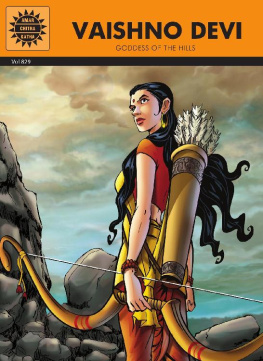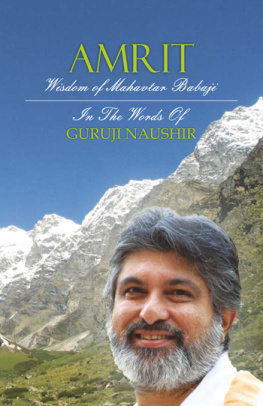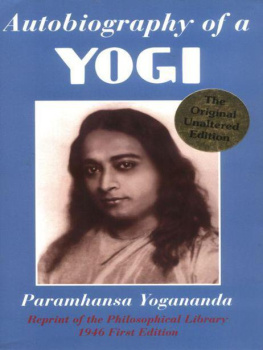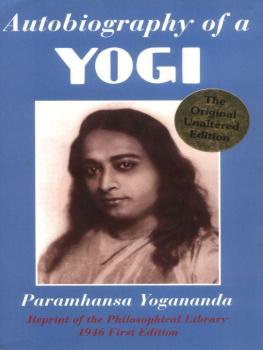The book
Fire of Transformation - a story of love between a woman and the Divine, between soul and spirit, between earth and sky, unique and precious. this is a deeply moving and personal account of challenge and revelation, of joy, struggle and surrender, of the outer and inner journeying towards self-discovery.
Valeria Bonnazola (Gora Devi) was a young student in Milan when an inner prompting called her to India in a search for love, the love for God. There she encountered the legendary Hairakhan Babaji -- referred to by Yogananda in his book, Autobiography of a Yogi -- the revolutionary teacher and acclaimed Mahavatar who transformed her life completely.
The author
Gora Devi was born in 10th April 1946. She obtained a Doctor of Philosophy degree at the University Statale in Milan with a thesis on Utopia and the New World. Travelling to India in 1972 she spent 12 years with Babaji, the renowned Yogi of the Himalayas. she was one of the first Western people to meet Babaji and his first Italian disciple. The life journey on which she embarked is both mystical and entrancing, simple and yet extraordinary; a story of courage and endurance, of human frailty and the absolute wonder of human potential. She continues to live primarily in India.
Gora Devi
Fire of Transformation
My life with Babaji


Imprint
Title of the Italian original: "Diario Indiano - BABAJI - Il Cielo In Terra"
1st edition 2001
Edited by Martin Holyoak
Copyright 2001 by Gora Devi
Copyright 2001 of the English 1st edition by Nymet Press, Devon
Copyright 2016 of the EPUB edition by Reichel Verlag, Regensburg
Coverdesign by Christian Wolf
ISBN 978-3-946433-78-1 (EPUB E-Book)
Other ISBN 978-3-946433-79-8 (MobiPocket E-Book)
Other ISBN 978-3-926388-28-5 (Book German edition)
Other ISBN 978-3-945574-98-0 (EPUB E-Book German edition)
Other ISBN 978-3-945574-99-7 (MobiPocket E-Book German edition)
www.reichel-verlag.de
Foreword
by Peter Dawkins
Inthis book Gora Devi writes of her personal experiences as a discipleof Shri Hairakhan Wale Baba, the Mahavatar Babaji who appearedpublicly in India at the end of the last century and millennium. Itis a beautiful account - beautiful in its honesty - and isbased upon the diary that Gora Devi kept during her time withBabaji. As she says herself in her own preface, this diary isintended to be a personal witness to a divine encounter. I alwaysfind it very touching, very moving, to hear or read about someone'spersonal encounter with Babaji, and even more so with Gora Devi, whowas one of the few people in the 1970's to become a disciple ofBabaji rather than just a devotee, and to be by Babaji's side duringthe last crucial years of his public appearance as Hairakhan Baba.This diary concerns Gora Devi's life and experiences with Babaji asa disciple during the years 1972-1984, and gives a unique insight notonly into Babaji and his way of teaching (or one of his ways, as hehimself is beyond limitation), but also into the transformationalprocess undertaken by his beloved disciple.
HairakhanBaba is known as a Mahavatar - a Great Avatar. Avatarmeans 'incarnation or manifestation of God', Mahameans'great'. In the Hindu Saivite tradition, Babaji is the Mahavatar ofSamba-Sada-Shiva,the Supreme Being who is described as 'He who gives happiness at alltimes'. When he appeared in 1970 in the Indian foothills of theHimalayas, at Hairakhan, Babaji was recognised as such by many greatyogis and saints, who were called to him and who had been preparingfor his reappearance. Babaji has many names to describe him, amongstthem being the Mahayogi (i.e. the Great Yogi or Yogi of all yogis)and Visva-Guru (i.e. the Guru of all gurus), who gave the world theyogic teachings and who has been with this world from its beginning,manifesting himself whenever appropriate throughout the ages. It issaid that such manifestations rarely occur and that when they do itis when a major crisis confronts humanity and the planet, and theworld needs greater help than can be given by an ordinary Avatar.Such a time is now, as we move from one Great Age (i.e. a 26,000-yearcycle of twelve zodiacal Ages) into a new Great Age, and out of theKali Yuga or Dark Age that ends each Great Age with a death andpurifying, transformational process.
In the Hindu tradition Shiva is the god-name usually associated withthat aspect of Deity which brings about death of the old form andtransformation (or transmutation) into a new form of expression.However, because this process brings about the birth of each newcreation, Shiva is known as the Creator as well as theDestroyer/Transformer. He is also the Maintainer or Preserver of whatHe creates. In other words, Shiva is the divine Trinity of Creator(Brahma), Preserver (Vishnu) and Destroyer (Rudra). He is oftenreferred to as Samba-Sada-Shiva('the Ever Holy Shiva'), or as Mahesvara ('the Great Lord'), namesthat correspond to Jehovah, the Lord God of Hebrew and Christiantradition.
Shivais that divine Spirit or essence of life, light and consciousnessthat is everywhere and out of which all things are made. Sometimes itis called the great ocean of life, sometimes the holy breath of life,sometimes the Word or 'Om'. We all share this same essence, and invarying degrees we manifest it consciously and beautifully in ourhuman forms of expression. To the degree that we can understand andtruly manifest this divinity we become devotees, disciples,initiates, saints, Adepts, Masters and Great Masters - or, inHindu terminology, sadhus, jnanis, yogis, Rishis, Sidhas and Avatars.The greatest of these in our world is Babaji ('Beloved or HolyFather'), the Mahavatar and Teacher of all teachers. It is verylikely that he is the same great soul as the one known in Westerntradition as IdrisorEnoch, who is described in Rabbinical literature as the first humanbeing in this world to achieve full enlightenment and rise to thehighest level of evolution, to become the supreme Messiah or Christand the Teacher of all other teachers, Master of all other masters. Ibelieve that this is so; but even this is too limited a viewpoint, asrealisation of the Divine is simply the moment in time when we ashuman souls consciously apprehend and are able to manifest to othersour own divinity, which has always existed from the beginning oftime.
Althoughhe has chosen to always be in this world, in order to help it,normally Babaji resides behind the scenes, seen and recognised byonly a few. It is said that he, as Mahavatar, materialises his bodydirectly when needed and is not born physically of any woman.Normally he maintains his youthfulness even whilst embodied,appearing as the ever-young and beautiful youth; but this is clearlynot always the case, as Babaji can do whatever he pleases andsometimes he chooses otherwise. He has appeared young, old, thin,fat, in sequence or simultaneously, in one body or several, tovarious people. Likewise, as Mahavatar he is said to be immortal evenin his physical form or forms, yet this cannot be understood in theordinary way: death is not always what it seems. Babaji plays adivine drama. He plays with elements. He can appear where and when hewishes, in one or more bodies simultaneously, physical or subtle, andof whatever appearance and age he chooses, and can dissolve them intolight or otherwise as and when he decides.
Inhis last public manifestation - the one in which Gora Devi wasinvolved and which is the subject of this book - Babaji wasreferred to as the '1008 Baba'. In this he had an exquisitelybeautiful form, but one which he continuallychanged during the fourteen years of his public appearance. Thepublic manifestation previous to that one (1800-1922), which wasreferred to by Paramahansa Yogananda in his widely distributed andinfluential book,
Next page









